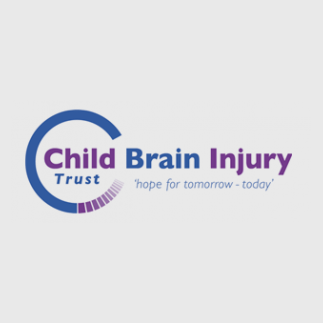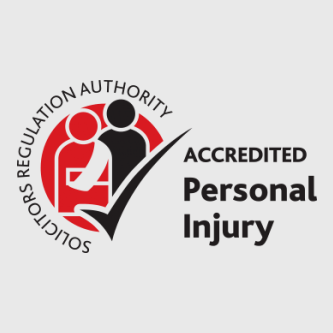Life after an amputation can be unimaginably difficult.
In the UK, a multi-disciplinary team of experts typically heads an amputee’s rehabilitation programme up. It is a fully integrated process that addresses much more than just the stump and remainder of the limb. Instead, it takes into account the whole lifestyle of the individual—be they at home, in the workplace, or outside in the local community.
The primary goal is to help the individual retain their independence; to encourage them to stay active for the rest of their life; to regain or improve their mobility; to boost confidence and to enhance their general quality of life as much as possible.
Rehabilitation is a gradual process, where small improvements may demand a great deal of effort from the amputee, and the level of progression made is often affected by the general health and strength of the individual before their amputation.
After surgery
Once the operation is over, the amputee is returned to their ward.
It is normal for amputees to suffer from post-operative swelling in the residual limb or stump due to a condition called oedema, which is a build-up of fluid that sometimes goes by the name ‘dropsy’.
This is relieved in the hospital via a process called oedema management, and is treated by draining away any excess fluid from the stump via a tube and by applying compression bandages to reduce the swelling.
The medical staff will manage levels of pain via necessary medication and will also administer antibiotics to prevent or remove infection.
Although much depends on the condition of the patient after their operation, the medical team may expect them to begin some recovery work as early as the day after their surgery.
In such cases, they can encourage simple and frequent limb movements in order to help the amputee build strength in their joints and muscles; provide guidance with sitting and balancing; help with handling objects and general dexterity; and so forth.
As time goes on and recovery improves, skills will be taught to the amputee so that they can provide self-care such as ‘stump bandaging’, as well as various exercises that minimise the risk of oedema reoccurring. After the patient leaves the hospital, oedema management will be monitored by their physiotherapist.
Types of therapy
Whilst still in hospital, the amputee will be under the primary care of a consultant, with further care to be provided by such specialists as physiotherapists; occupational therapists; and so forth.
Once the patient leaves hospital, they may be transferred to a designated rehabilitation facility where they will receive all multi-disciplinary rehabilitation; or they may be discharged from the hospital directly to their home in order to undertake rehab as an outpatient, which may involve attending various specialist centres.
Recovery levels differ from person to person; some people may adapt to their new circumstances quickly, whilst others may not be so adept. How people react depends on an almost innumerable amount of factors, but the rehabilitation team’s aim is to help the amputee achieve their best possible level of recovery.
For continuity purposes, the patient will work with the same individual team members on a long-term basis. Although that may not always be guaranteed, it can be expected that the amputee will receive ongoing rehabilitation under the care of specialists in the following roles:
Consultant and nurses
It is important to note that the consultant is a doctor and not the amputee’s surgeon. The consultants is an expert in the field of amputation rehabilitation, prosthetics and limb-care, and is responsible for making final medical decisions in the patient’s best interests along with providing acute pain management.
Nurses are available in the hospital round the clock and attend to the immediate needs of amputees. This can range from helping patients with their self-care and mobility, through to wound care and providing advice.
Physiotherapy
The physiotherapist has one of the most crucial and vital roles in the rehabilitation process.
An amputation means that people have to learn how to use their bodies in a completely different manner. It is a monumental challenge, but physiotherapy helps people to adapt to their new situation through repetitive strength-building exercises.
It is hugely important that the amputee keeps using their remaining limbs through exercise, because it does not take very long for unused or less-active muscle groups to begin to waste away via a process known as muscle atrophy.
The physiotherapist draws up a therapeutic exercise plan to assist with:
- Strength building
- Stump positioning – helps to improve handling and healing of the remaining limb
- Fitness building – particularly if inactive for some time
- Gait training – helping the patient to continue to use an even amount of muscles on either side of the body
- Relieving pressure on wounds – particularly the parts of the body that are susceptible to pressure sores if bed-bound for extended period of time
- Prosthetic limb usage
- Body transferrals – for example, from the bed to a wheelchair
- Wheelchair usage
As the patient’s strength, balance and coordination improves over time, the physiotherapist gradually readjusts and refines these methods to customise the rehabilitation process towards the amputee’s specific needs.
For example, if it is known that the patient will later make use of a prosthetic, the process may be tailored to account for any post-surgery swelling via methods such as stump massage and ongoing oedema management as preparation for the limb fitting.
Occupational therapy
An occupational therapist assists the patient by helping them with their self-care needs and day-to-day activities.
Occupational therapy helps the patient to put into practice the advantages gained through physiotherapy. For example, the strength-building exercises that they may have benefitted from can be applied to many activities, such as the following:
- Housework
- Personal care (such as washing, bathing and grooming)
- Toilet usage
- Daily tasks such as preparing food and drinks
- There are many more activities that the occupational therapist can help with, and in circumstances where the amputee cannot complete a task, they may assess whether further assistive equipment is necessary, or whether there should be adaptations to the amputee’s property that may help; for example, through installing raised toilet seats or a shower chair.
In addition, should the amputee later adopt the use of a prosthetic limb, the occupational therapist will help them learn how to use the appendage in day-to-day situations.
The goal is to increase the amputee’s independence, particularly important when it comes to matters involving the bathroom or dressing. However, equally important is maximising the patient’s safety, and they must be able to complete any tasks without putting themselves in unnecessary danger.
Over time, the amputee’s skills should develop and they will be able to complete the majority these tasks to a level of efficiently not unlike their pre-injury lifestyle, although only as much as their condition will permit.
Prosthetist
A prosthetist is somebody who cares for amputees by designing and providing the best-suited artificial limb that will help them to function in their lives in the best way possible.
The prosthetist models the amputee’s stump (or region of the body that the assistive appendage will be fitted to) by creating a mould, either via an actual physical cast, or more commonly in recent years through 3D digital imaging.
The thoughts and opinion of the amputee are highly valuable to the prosthetist, as they will discuss every single aspect in order to create a limb that is equal parts functional, safe, and visually appealing.
Furthermore, technology progresses at an almost impossibly rapid rate, so the prosthetist will be abreast will all the latest developments to be able to identify those that are most suited to the patient, also providing recommendations and advice going forward.
Various prosthetic limbs have been developed that apply to certain situations and terrains. For example, there are the high performance and lightweight prosthetic feet sometimes referred to as ‘blades’ much like those seen worn by runners at the Paralympics, whilst others are more sturdy and anatomically correct in their visual representation of feet.
Once selected, the prosthetist can demonstrate to the patient the correct way of using their new limb, and also the right way to look after it. Going forward, adjustments and adaptations can be made in order to refine the limb’s suitability to amputee.
Social worker
A social worker is a facilitator for the amputee, who provides advice and support. Rather like a case manager, they help make arrangements to bring the amputee’s requirements into fruition.
Such examples include arranging private home care visits; assessing as to whether ‘meals on wheels’ may be required and if so implementing it; transportation requirements; recommending and helping to obtain benefits; and so forth.
Clinical psychologist
It is quite understandable that people who have undergone an amputation will feel a strong emotional and psychological impact on their lives. Not only that, but it can also heavily affect their family and friends.
For that reason, it is often recommended that people in such situations attend counselling sessions in confidence to help them cope with any feelings of depression, sadness and despair. Talking about the situation can help people face up to their future and cope with their emotionally debilitating issues.
Self-care
Stump care
The NHS advises that all amputees wash their stump at least once per day with soap and water, although it should be more often whenever the weather is warmer. This is to prevent the skin becoming irritated and naturally, to prevent infections.
The stump should not remain underwater for too long, for example, when the amputee is bathing, as the extended period underwater can cause the skin to break down and therefore increase the chances of infection.
When drying the stump, some amputees have recommended the use of a hairdryer as a non-abrasive and effective method. Unmedicated talcum powder along with prosthetic socks can help reduce levels of sweating on the stump.
Always check the stump for any signs of infections or swellings. If any are found, no matter how minor, it is recommended that advice be sought from a medical professional.
Keeping the same level of cleanliness applies to the plastic sockets of prosthetic limbs. They too must be cleaned daily and thoroughly, although detergents should be avoided.
Exercise
Exercise is vital in helping amputees retain their independence. By building strength and endurance, amputees will find it easier to use assistive equipment and performing the same tasks as they could pre-surgery.
It can also help to prevent one side of the amputee’s body becoming more developed than the other. Loss of muscle mass on one half of the body may heighten the appearance of their amputation, so preventing this through exercise can help with self-image issues.
The future
The needs of an amputee change over time, and in particular, there are the usual elements of aging to take into account such as arthritis.
It is important to lead as healthy a lifestyle as possible. Close attention must be paid to controlling weight, as this can have a detrimental effect on an amputee, particularly those who have lost a lower-limb.
Amputation does not get any easier, and it may mean that as time goes on, the use of a prosthetic limb will have to decrease whilst a wheelchair will become the amputee’s dominant aide, particularly when travelling further afield or for extended periods of time.









